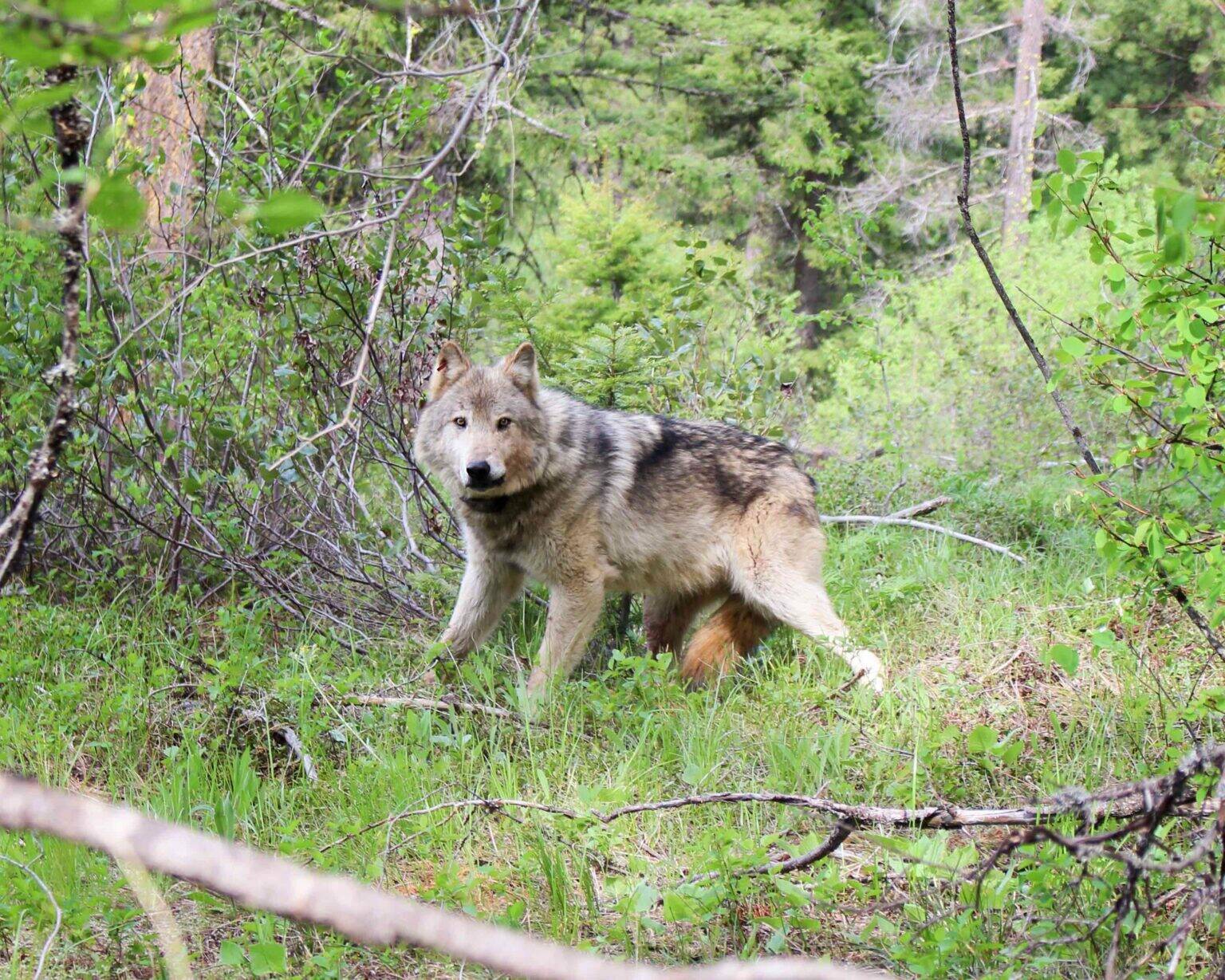The Washington State Fish and Wildlife Commission will decide next month on lowering gray wolves’ status under the state’s endangered species law.
Environmentalists and others say this would lead to inadequate protection for the animals when they still haven’t recovered in parts of the state. State Department of Fish and Wildlife officials and others contend that not much would change in terms of how the animals are shielded from hunting and argue the move makes sense because wolf numbers have strongly rebounded.
The Department of Fish and Wildlife’s recommendation is to downlist wolves from “endangered” to “sensitive.”
In a Saturday meeting, wildlife commissioners had many questions about what that would mean for the species and appeared split on how to proceed.
“A downlisting recommendation has nothing to do with a wolf’s value,” said Julia Smith, Fish and Wildlife’s endangered species recovery manager. “It has everything to do with their legal and biological status.”
Even if the commission chooses to downlist the animals, wolves in the western two-thirds of the state would still be classified and protected as an endangered species under federal law.
The commission will meet next on July 19 to vote on the status change.
The stakes
Gray wolves were first put on the state’s endangered species list 40 years ago and recovery efforts since appear to be working.
Last year’s annual wolf report found the state’s wolf population increased by 20%, the 15th year in a row it grew. As of the end of 2023, Washington had 260 wolves in 42 packs. That’s up from 216 wolves in 37 packs the previous year. Since the first breeding pack was confirmed in 2008, the gray wolf population has grown by an average of 23% every year.
Most of the growth has occurred in eastern Washington and the northern Cascades. The wolf population in other areas where they’ve historically lived, like the southern Cascades and the Olympic Peninsula, is still lacking.
Wolf management in Washington has long been controversial, and as Chair Barbara Baker said Saturday, the commission will be judged regardless of what they decide on downlisting.
While environmentalists often argue the state is not doing enough to protect the animals, ranchers say the state is not doing enough to protect livestock, which wolves can injure or kill.
“I hope that we’re careful,” Baker said. “I hope we don’t alienate any of our partners.”
What would change?
If the downlisting is adopted, gray wolves would still be protected from hunting, though the penalties would be slightly lower.
Current law dictates that hunting or killing an endangered species can result in up to a $5,000 fine and one year in jail. Under the sensitive category, possible punishment for illegally hunting or killing a species is up to 90 days in jail and a $1,000 fine.
Another significant change under the sensitive category is how the state administers permits to kill wolves. In general, livestock owners are restricted from using deadly measures against wolves. But Fish and Wildlife may issue permits to kill the animals in certain circumstances where the agency believes that the state lacks the resources needed to control them.
Under the proposed changes, livestock owners could have more access to those permits, though they would still need approval and training from the department before getting one.
On Saturday, some commissioners were concerned about whether these changes could push the species back toward extinction or delay its recovery.
Smith, with the Department of Fish and Wildlife, pushed against that argument. Wolf poachings happen regardless of protections, she said, and there should be very steep punishments for them. Increasing those punishments, however, is the job of the Legislature.
On the changes in livestock owner permits, she said the department rarely approves them, and many times livestock owners don’t even want them.
Remaining questions
On Saturday, some commissioners grilled Smith and the department on their recommendation.
One major question is whether wolves are properly spreading across the state in their historical range, and there were concerns among commissioners that without many wolves in the southern Cascades and the Olympic Peninsula, it’s too early to remove the species from the endangered list. It’s a similar argument from environmental groups who are against the shift.
There was also concern that the models used to predict future wolf populations don’t account for all of the risks that the species could face if downlisted.
“There are details that need to be cleaned up, and we need to have a common understanding,” said Commissioner Tim Ragen, who represents Skagit County.
Despite the questions, some commissioners appeared ready to support the downlisting.
Commissioner Molly Linville, representing Douglas County, said it was time to acknowledge the success that Washington has had with wolf recovery. “I ask that you all show some progress because progress has been made,” she said.
Similarly, commissioner John Lehmkuhl, who represents Chelan County, said downlisting is just another step in Washington’s successful efforts.
“A lot of people think the proposal is going to eliminate wolves or reduce our efforts for recovery, and that’s simply not true,” Lehmkuhl said. “This is a good faith effort to continue our wolf recovery program.”
Washington State Standard is part of States Newsroom, a nonprofit news network supported by grants and a coalition of donors as a 501c(3) public charity. Washington State Standard maintains editorial independence. Contact Editor Bill Lucia for questions: info@washingtonstatestandard.com. Follow Washington State Standard on Facebook and Twitter.





